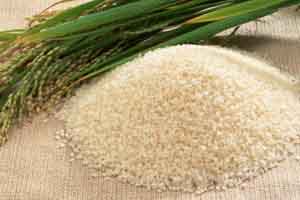Good harvest brings no smile
 As about 98 per cent of Aman harvest is over, the growers have no way but to count losses as the prices they are getting are much below the production cost. The production of rice would exceed the target of 132.6 lakh tonnes this season, said officials of the department of agricultural extension (DAE).
As about 98 per cent of Aman harvest is over, the growers have no way but to count losses as the prices they are getting are much below the production cost. The production of rice would exceed the target of 132.6 lakh tonnes this season, said officials of the department of agricultural extension (DAE).
The gross production of rice would increase due to the increased acreage of rice (56.43 lakh hectares) this Aman season although farmers in some regions are experiencing a slightly lower yield than that of the previous years, they added. Besides, the peasants have been experiencing huge losses due to low prices of paddy at the local wholesale markets since the beginning of the Aman harvest in mid-October. Farmers across the country have been selling Aman paddy at a rate between Tk. 550 and 570 a mound, which is much below the production cost calculated by the agriculture ministry that is Tk. 600 a mound.
The belated government declaration on December 5 for procuring two lakh tonne rice from millers, instead of procuring paddy from farmers, has failed to make any impact on the prices at the growers’ level, market sources, farmers and experts said.
Moyna Begum, a sharecropper of Char Gullakhali village in Noakhali, cultivated BRRI dhan 40, 23 and bazal dhan, a local variety, in three Kani lands (1 Kani = 120 decimal) this Aman season. Despite getting a lower yield than the previous years, the price of Aman paddy was unbearably low for her.
“The labour cost being almost double compared to that of the last year, we have to spend about Tk. 15,000 a kani to produce BRRI paddy. With a yield of 35-36 mounds (1 mound = 40 kilogram) per kani, and with the current rate between Tk. 550-570, you are bound to count losses this season,” said Moyna, who has already shared half of her harvest to the land-sharer and is still waiting for the price of paddy to rise.
Shah Newaz, owner of about 7.5 acres of farmlands at the same village, had cultivated BRRIDhan 40 in half acres by himself. Newaz said the price of paddy was extremely low this season. “One month ago, the mokam (local wholesale market) price was below Tk. 550 a mound. The prices increased a bit one week ago to Tk. 580 a mound, but again went down to Tk. 570 on Thursday.”
Ainul Haq, a farmer of Lahiripara union parishad at Bogra Sadar, told The Independent that the current price of Aman paddy in the Mokams was Tk. 580 although most of the farmers had sold out their harvest at a much lower price between Tk. 520 and 550 per mound over the last two weeks. Aman paddy has recently been sold between Tk 580 and 650 a mound in eight districts of Rajshahi division, said a source in the wholesale market. Dr Kalidas Debnath, additional director of Rangpur regional office of DAE, said the harvest of Aman was complete in the six districts under Rangpur division.
The average yield of high-yielding varieties (HYV) was recorded between 2.5 and 3.1 tons per hectare, while that of hybrid paddy was between 2.5 and 3.5 tonnes, added Kalidas. Last year, the average yield of HYV paddy was 2.8 tons per hectares, said Kalidas.
He pointed out that the yield of paddy, especially the hybrid varieties, had decreased than the previous year’s yield this Aman season. According to the Rangpur regional office, 10.84 lakh hectares of farmlands were brought under Aman cultivation this year, comprising 9.95 lakh hectares under HYV, 13,000 hectares under hybrid and 75,000 hectares under local varieties.
Ainal Haq of Lahiripara Union Parishad said he cultivated BRRI dhan 11 and BINA 7 in some of his lands with an average yield of 12 mounds and 18 mounds a bigha (1 bigha = 30 decimals) respectively. “Yield of paddy this Aman season was below average. For example, BRRI dhan 11 normally gives you 15 mounds a bigha, but this season the yield was only 12 mounds,” he added.
The trend of low prices at grower’s level would seem even gloomier if we consider the increased production cost of Aman this season, he said.
Sources in the agriculture ministry said the production cost of Aman paddy this season stood at Tk. 15 a kg, up by 13 per cent than the cost the previous season. Aman production cost has also surpassed that of Boro as the ministry, earlier in June, estimated Boro paddy production cost at Tk. 14 a kg. “Naturally, the production cost of Aman paddy and rice remain a bit lower than the cost needed in the preceding Boro season as Boro is a high input-based cultivation system that is dependent, most notably on groundwater irrigation. But this year, the trend is reversed due to increased cost of labour, ploughing and milling,” said Md. Eunus Ali, director (field service wing) of DAE.
“The price of urea increased by Tk. 8 lakh a kg as the Aman season started, the prices of other fertilizers, pesticides also increased to a great extent. The labour cost increased by Tk. 100 per day, while the charge of tractors for tilling one bigha (30 decimals) land increased by Tk. 100 too,” said Murshed Ali, the president of Bangladesh Krishak Samity.
Dr. Asaduzzaman, research director of Bangladesh Institute of Development Studies (BIDS), added that the government should have declared the procurement target by September. Naturally, the price of rice gradually goes on an uptrend before the Aman harvest between September and October, whereas the prices calm down a bit after the harvest, he said.
But this year, the trend has been reversed as predictably the traders, who hoarded excessive amount of rice from the Boro harvest, sold out their stock at that time, he added.
“On the other hand, a declaration for Aman procurement at that time could influence the prices of Aman. The government is now procuring rice instead of paddy and it’s an untimely procurement for which the farmers are not getting any benefit out of it,” said Asaduzzaman.
According to the Fortnightly Foodgrain Outlook of Food Planning and Monitoring Unit (FPMU) under the food ministry published on December 16, the wholesale price of rice had been decreased by 6 per cent, Tk. 25.86 a kg, since mid-October. The wholesale price of rice was 20.7 per cent lower than that of the previous year, the report added.
Until December 16, 4.3 thousand tonnes of Aman rice was procured from the millers, which represents 2.17 per cent of the target, the report added.
According to records in the department of agricultural marketing (DAM), the wholesale market price of coarse paddy was Tk. 1503 a quintal in the second week of December – an increase of only Tk. 1 than the price October. Notably, the price got down to Tk. 1,444 a quintal in November at the district-level wholesale markets, the records revealed.
Courtesy of The Independent




















